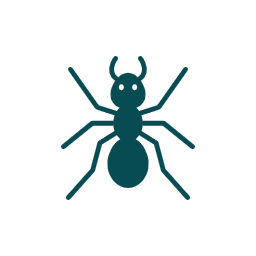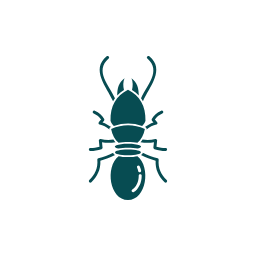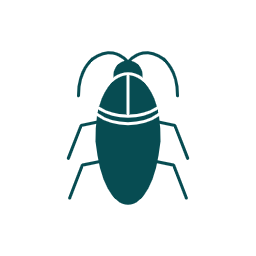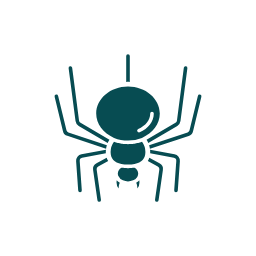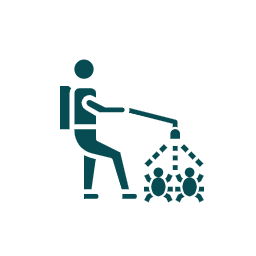Think there really isn’t anything skittering above your ceiling? Think again. If you’re hearing scratching noises at dusk in the attic or finding unidentifiable droppings along your roofline, it could mean you have a roof rat infestation—and these pests aren’t just passing through, let us tell you. Roof Rats Roof rats are the predominant rodents in Australian homes, and they pose a unique threat due to the fact they can nest in the upper areas of your property.
This roof rat guide breaks the task down into specifics of how to spot and eradicate roof rats before they create expensive damage or transmit disease. From seeing the first signs of roof activity to selecting the best possible pest solutions, you will know what to look for, how to act and just how Pest2Kill can keep your home or business safe.
Getting a Grip on the Roof Rat Infestation Issue
Roof rat infestation is more dangerous to you than just a mere nuisance. Roof rats make their homes in high places and are not like Norway rats that burrow almost exclusively at ground level. And because of that, they can do unseen damage to your roof, insulation, and electrical wiring — not just because they can start a fire, but because they’re a major health hazard.
Given the fact that these creatures are good at climbing, they tend to use tree branches, bushes or power lines to climb up and access your roof. And as soon as they arrive, they set up shop around your roof — or other part of your home — and begin to build their colonies. If you don’t get after them quickly, they can multiply and cause extensive damage to your home and potential infestation elsewhere.
Key Signs of a Roof Rat Infestation
Catching a roof rat infestation early is crucial for effective pest management. One of the first signs of a roof rat problem is scurrying noises coming from your attic or walls, especially at dusk, when these nocturnal rodents become active.
You might also notice rat droppings—long with pointed ends—typically found near your roof, behind appliances, or along attic beams. Roof rat droppings differ from those of Norway rats, which are stockier and leave shorter, blunt-ended droppings.
Other red flags include:
- Gnaw marks on wood or electrical wires
- Nests outside in wood piles or thick vegetation
- Greasy rub marks along rafters or beams
- Urine odour in enclosed areas
Recognising these signs of an infestation early gives you a better chance at preventing serious pest issues.
How Dangerous Are Roof Rats?
Yes, roof rats are dangerous—not just because of the damage to your home, but also because of the serious diseases they can carry and spread to humans. From rat-bite fever to salmonella and leptospirosis, the risks go beyond just chewed wires and nest insulation.
Their urine, droppings, and shed fur can contaminate food and surfaces, especially in places like your attic or pantry. And if you’re storing pet water bowls or nuts and fruits in exposed areas, you’re practically setting out a welcome mat for these pests.
What’s worse? Roof rats can also cause fires by chewing through electrical wiring—turning a quiet infestation into a catastrophic emergency. Don’t let their smooth, black-coloured appearance fool you. These aren’t cute critters—they’re a health hazard.
Getting Rid of Roof Rats: What Works
So, you’ve confirmed the presence of roof rats. What now? The key to getting rid of them lies in a multi-step pest control approach.
Start by removing any potential food sources. Store food in sealed containers and keep pet water bowls off the floor overnight. Trim tree branches touching your roof, clear wood piles, and clean up shrub areas around the home.
Next, seal all entry points. Look for gaps in soffits, vents, and roof junctions. Use metal mesh or steel wool to block them—remember, roof rats can’t chew through metal easily.
Finally, invest in traps or baits—but do so strategically. Place traps near known runways, typically along rafters or near an ant trail of droppings and urine. Better yet, work with a professional pest control company like Pest2Kill for the most effective pest control treatments. One rat caught doesn’t mean the infestation is over—rat populations can bounce back fast if not fully addressed.


Common Entry Points Into Your Roof
Wondering how these critters get into your home in the first place? The answer is simple: roof rats are known for finding sneaky ways inside.
They often access your attic via
- Vents without screens
- Gaps in the roof tiles or eaves
- Unsealed junctions near chimneys or fascia boards
- Overhanging tree branches
Because roof rats are smaller than Norway rats, even a hole as small as half an inch can become a way into your home. It’s why sealing entry points is such a vital part of any control measure.
If you see a rat, you can bet there are more you don’t. Conducting a full inspection of your roof, attic, and around the home is essential for long-term success.
Comparing Roof Rats and Norway Rats
Many homeowners confuse roof rats and Norway rats, but knowing the difference helps in pest control strategies. Roof rats (also called black rats or ship rats) are slender, have fur that is smooth, and have tails that are longer than their bodies. They’re climbers, typically nesting in attics, roofs, and trees.
Norway rats, on the other hand, are stockier, burrow in the ground, and prefer basements or crawlspaces. Also called the brown rat, they’re less agile but stronger.
Both species are dangerous, but since roof rats prefer elevated spaces, your roof, attic, and eaves are most at risk. Understanding the rat species invading your home makes it easier to apply targeted pest management techniques.
Preventing a Roof Rat Infestation
When it comes to roof rats, prevention is better (and cheaper) than cure. Here’s how to stop them before they start:
- Seal cracks and holes in your roof, vents, and soffits
- Remove potential food sources like open garbage bins, compost, and pet food
- Trim back overhanging tree branches and clear overgrown vegetation
- Eliminate outdoor nests by cleaning wood piles and garden clutter
Most importantly, work with a licenced pest control company like Pest2Kill. Our pest control experts can help identify and eliminate vulnerable areas, apply deterrents, and keep roof rats from entering your home in the first place.
Remember, even the most secure homes can still become targets if nearby roof rats also spread from neighbouring properties. Ongoing maintenance is key.
Why Professional Pest Control Matters
DIY traps might catch one rat, but they rarely solve the full problem. Roof rat infestations require targeted methods that only a professional pest control team can deliver.
At Pest2Kill, we start with a full inspection to assess the presence of roof rats, determine the rat species, and locate any nests or entry points. From there, we implement a comprehensive control plan that includes exclusion, trapping, and sanitization.
Taking action early is crucial for effective pest management and preventing further damage to your home. You don’t want to wait until you see roof damage or smell urine in the attic—it’s better to be proactive.
Final Thoughts: Don’t Let Roof Rats Take Over Your Home
Roof rats aren’t just a small annoyance—they’re a big threat. Their ability to climb, get inside, and quickly establish a nest makes them one of the most destructive pests for your home or business. They chew, contaminate, and multiply—fast.
By watching for early signs of an infestation, sealing your roof, and calling in professional help, you can stay ahead of a roof rat invasion. And remember: prevention is key. Remove food sources, clean around the home, and trim tree branches to keep these rodents away for good.
Need help now? Contact Pest2Kill, your trusted pest control experts. We’ll help you identify and eliminate any roof rat infestation—fast, safely, and thoroughly. Because when it comes to roof rats, there’s no room for guesswork.
FAQS
What are the signs of roof rat activity near your home?
Signs of a roof rat infestation include scurrying noises in the ceiling, especially when rats are active at dusk or dawn. You may notice droppings that are long with pointed ends, grease marks along beams, or even gnaw marks on insulation and wood. Although roof rats are smaller than Norway rats, they can cause significant damage if not addressed early.
Are roof rats dangerous to my home and health?
Yes, roof rats are dangerous because they chew through wires, insulation, and timber, which can lead to fire hazards and costly repairs. More importantly, they pose health risks by spreading diseases through their droppings, urine, and nesting materials. Their fur is smooth, and they tend to search for food at night, contaminating pantries and kitchens.
Can roof rats live in my attic?
Absolutely. The attic is a favourite nesting place for roof rats. They access it through gaps in vents, eaves, or tree branches overhanging your roof. Once inside, they build nests in insulation, chew on materials, and expand rapidly. To prevent roof rats from entering, seal all potential entry points and trim any bush or tree limbs that touch the roof.
What are the early signs of an infestation I should watch for?
The first signs of infestation often include scratching sounds in walls or ceilings, droppings with pointed ends, and nests built in hidden spaces like roof cavities or sheds. You might also look for gnaw marks on wood, cables, and even plastic containers. Spotting just one of these could mean a larger rat population is present.
How do roof rats get inside the home?
Roof rats get in through small openings around vents, eaves, and pipes. They’re excellent climbers and can reach your roof using bushes, vines, or even power lines. Once they get inside, they quickly find secluded areas to nest. Sealing cracks and trimming vegetation near your home can help stop them before they settle in.
What makes roof rats a common pest in urban areas?
Roof rats are a common pest in cities because they thrive around human homes and businesses, especially where food and shelter are readily available. Their fur is smooth, and they’re quick and agile, making them hard to spot. Once established, they cause significant damage and spread quickly through rat populations if not managed professionally.
Are Alexandrian roof rats different from other rats?
Yes, the Alexandrian roof rat (another name for the black rat) is slimmer and more agile than the Norway rat. Its fur is smooth, its tail is longer than its body, and its droppings are long with pointed ends. It prefers higher nesting sites like attics and ceilings, making it important to regularly check those areas to prevent roof rats from entering.


